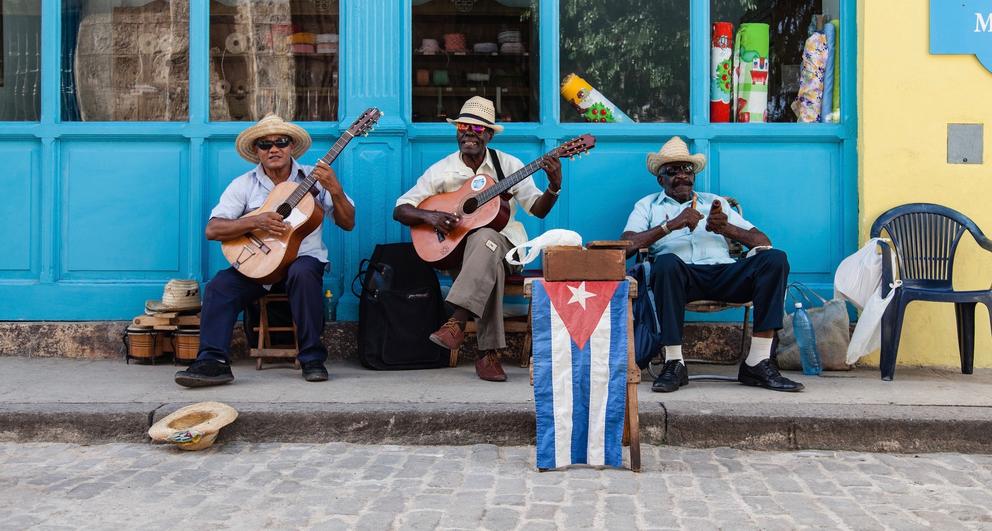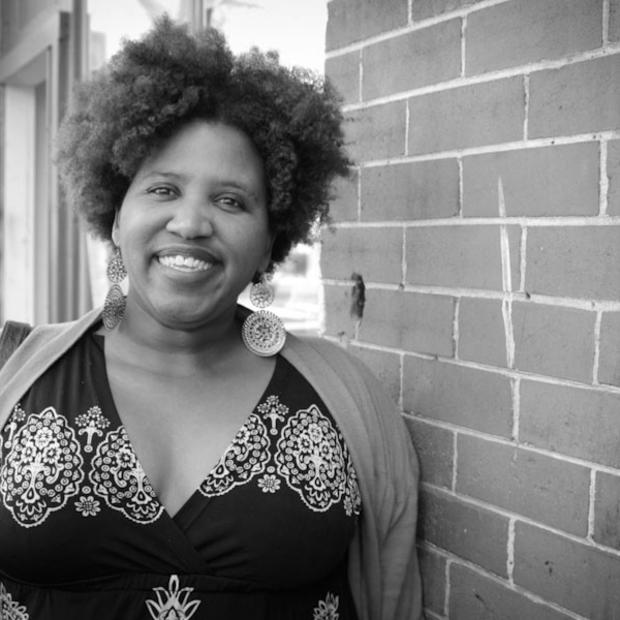Art and revolution are often said to go hand and hand, so it was fitting that Cuba serve as the destination for the inaugural voyage of Seattle's Common Ground Music Project.
Led by Seattle playwright and musician Shontina Vernon, the independently funded project took a delegation of 12 mostly black musicians, artists, and dancers from Seattle to Havana and Viñales to collaborate, connect, and perform with their Cuban counterparts.
The Common Ground Music Project aims to use music “to promote social justice and cross cultural collaboration,” and Vernon says the larger aims played into the selection of all the Seattle participants.
“I wanted these artists," says Vernon, citing each one’s relationship not simply to the arts, but also to social justice. “Common Ground Music Project for me was an idea that was about investigating the intersections of music and performance art with social justice work.”
The trip’s goals included creating community between U.S. and Cuban artists and centralizing the narratives of artists from the global African diaspora. Vernon also hoped to strategize how to connect and sustain the movements of social justice and freedom in both places.
Vernon says she’s been thinking about “what it is to have artists who are digging around through ideas around freedom and liberation … why it would be critical to their creative process to have an experience of those very things.”
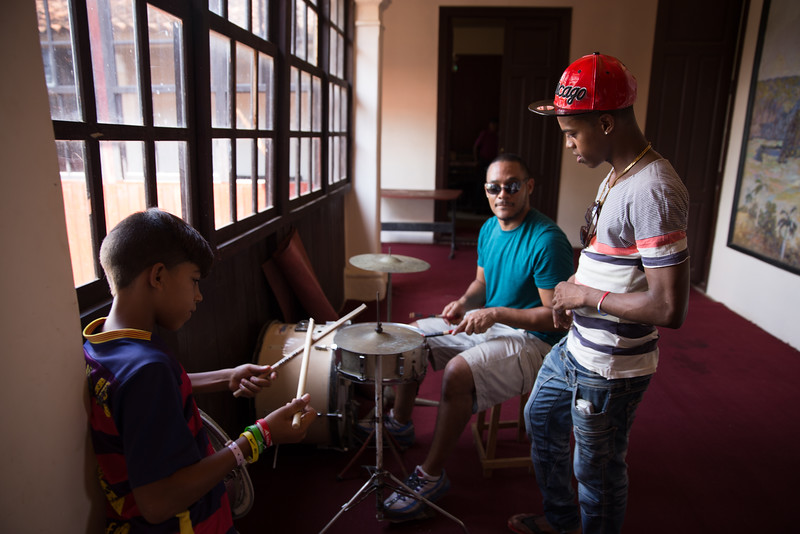
Besides Vernon, the U.S. cohort consisted of Jade Solomon Curtis, Lara Davis, Ben Hunter, Naomi Ishisaka, Christina Orbe, Chris Patin, Gabriel Teodros, Dani Tirrel, Barry Jones aka D.J. Topspin, Melissa Dow, Matt Sherrill and Adiza Ameh.
In 2011 Vernon had her own first taste of Cuba. “I had this experience of a kind of safety and a kind of freedom and also an awareness of my own privilege in a different way because of the politics on the island.”
Leaving the States gave her a new perspective on being a black American. “I define freedom I think in terms of the safety one feels in terms of being able to be fully embodied as themselves,” Vernon says. Initially it surprised her to realize just how unsafe she felt in the States. “You know because I didn’t really register consciously in my every day going about,” she says. “We’re in such a survivalist mode that it doesn’t occur to you until you go somewhere and the contrast makes it obvious.”
The #blacklivesmatter movement began in the wake of the 2012 murder of Trayvon Martin and the 2013 acquittal of his killer, George Zimmerman. Since then the racial politics of safety have increasingly made their way into the media and, of course, daily conversations. But Vernon would like to see these conversations broaden from the U.S. to an international context.
“What’s happening there [is] what’s happening here. Black people in the UK, same thing. Black people in Paris, same thing. Black people in Berlin, same thing,” says Vernon.
Cuba, the island nation just 90 miles south of Florida, has defied the U.S. government for years in choosing to remain socialist and independent. While not exempt from racism, it is a country with a complex and radical relationship to blackness, from helping to end apartheid in South Africa to creating a medical program to train black people from the U.S. to be doctors. Cuba has also served as a refuge for U.S. black radicals such as Assata Shakur, a former Black Panther Party whose case has been a cause among many U.S. radicals for decades since her controversial conviction for the death of a police officer in 1973.
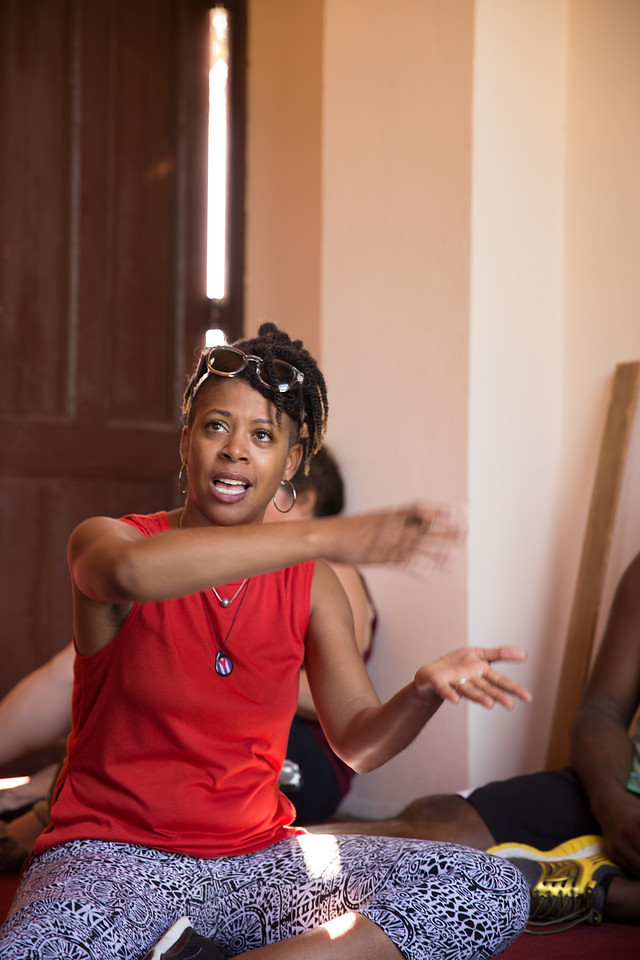
“Really the truth is that all around the world for people of color, for black people the story is not vastly different,” said Vernon. “So I’m like, if black people from everywhere don’t start talking to each other about what it is that we’re experiencing in our own countries, the pie of liberation will always be minus a slice. … So that to me is solidaridad [solidarity] and the Common Music Project.”
When dancer and choreographer Jade Solomon Curtis arrived, she found, "I wasn’t black in Cuba, I was American.”
This claiming of citizenship brought with it both the advantage of certain privileges, but also stigma. Curtis recounts that initially the Cuban artists seemed reluctant to share their experience of blackness, but as they spent more time together they grew more open about the challenges they faced.
For Curtis, having the revelation that “feelings of exhaustion that I may experience being in this skin is something that someone else experiences as well or has experienced” became a cross-cultural bridge and made her feel less alone.
“My work prior to the work that I’m doing now was always about making sure that people saw my beauty,” explains Curtis. “Making sure that people saw that, hey, there’s this black girl, but guess what? She can do all these styles of dance and it’s not just African and hip hop, not to diminish those, because that’s my ancestors, that movement.”
Somehow over the course of the group's stay in Cuba, Curtis experienced the alchemy of travel magic that sparks transformation. “Right now I am more interested in exploring what’s happening deep down in me. I’m interested in exploring the conversations I’m having with people and exploring, showing work or rather creating work that reflects the current state of my existence, and that is not always pretty.”
Cuban hosting organizations included the Havana Centro Cultural and Ammonite Dance, a youth ensemble. Some of the Cuban artists that participated included writer Jesus Gonzales, hip hop artist Fina and spoken word Elier “El Brujo” Alvarez.
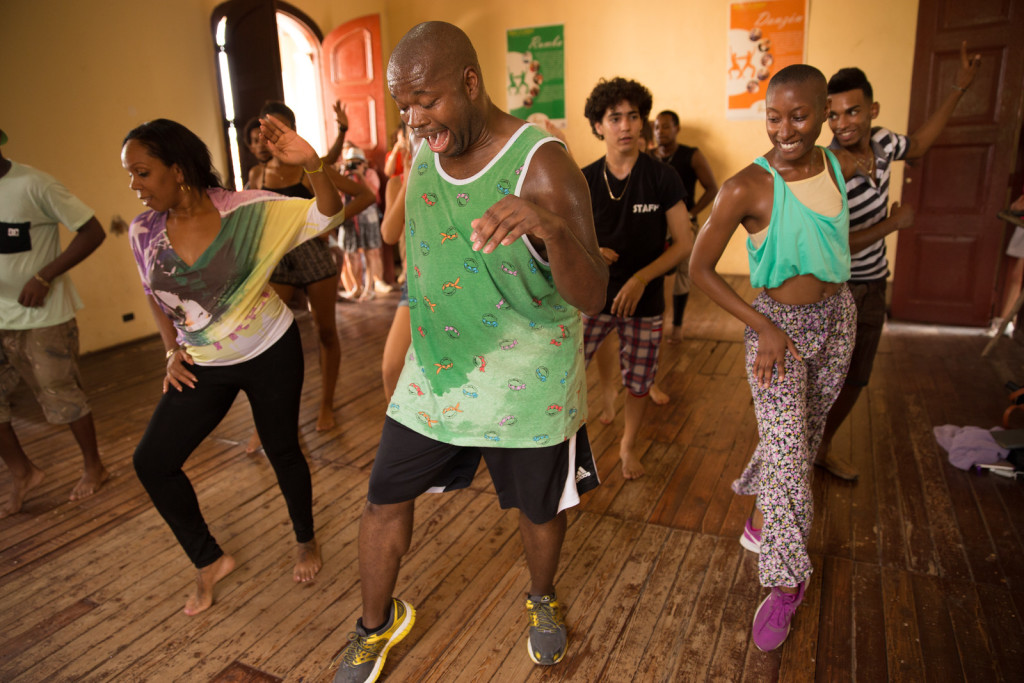
One of her favorite moments took place in Viñales, a town of around 30,000 that is near a U.N.-designated heritage site and has become something of a tourism center, with Madelin Azcuy, known as Mamuchi. Curtis, Mamuchi, the director of Ammonite Dance, and Seattle dancer and choreographer Dani Tirrel collaborated in the co-creation of a dance, blending steps from both cultures. “It was just really wonderful to be a part of that space or that energy. And it didn’t feel contrived, just very organic,” said Curtis.
For musician Ben Hunter, who describes himself as a folklorist, the experience was tremendous in many ways. “I don’t know, there is something about Havana,” said Hunter describing streets filled with murals depicting Cuban pride and revolution. “There’s something about the place that just spilled out art and music and culture in a certain way.” He compared it to New Orleans in its expressiveness.
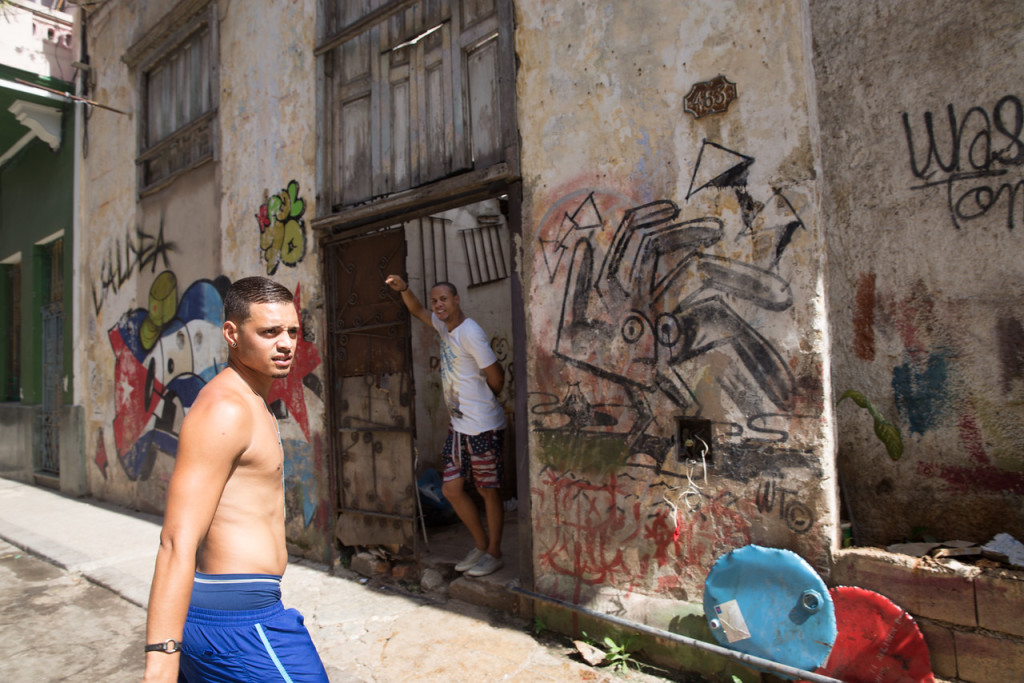
When he wasn't with the group, Hunter spent his time wandering the streets, soaking up the music and connecting with as many people as he could. On one of his adventures he stumbled across a building dedicated to folklore and teaching Cuban youth traditional music and dance.
“That was what really turned me on,” he said. “Just knowing that over my shoulder at any point in time I could see some kind of example of how the arts was a living and breathing part of their culture on a day-to-day basis which is something I think is really, really different than America.”
Hunter also described time in Cuba as being on a different meter. “The culture is so different in that there is a Cuban time,” he said. “And not that it was like a laziness, because there certainly was not a laziness, but it was like a swag almost, it was like a stroll, like the streets had rhythm to them.”
Hunter left longing to see music more incorporated into Seattle’s way of being: “Music, dance, and art is something that you only get at a museum or a concerts, but it's something you could get off the street anywhere.”
A venture he's involved with could do some of that, at least in one neighborhood. Hunter is a founding partner in the Hillman City Collaboratory, known in the Southend as an “incubator for social change” which hosts a variety of community events as well as housing a workspace for local nonprofits. This fall, Hunter and his business partners, Chef Tariq Abdullah and Rodney Harold, will be opening a new collective in Hillman City called the Black and Tan, which will provide a café and a venue for local performers.
About the Seattle group brought together for the trip, Hunter said, “It was an interesting collection,” said Hunter with regard to the Seattle cohort. “I think we had a really creative group of people from such a variety of backgrounds. It was about really meeting each other and developing relationships.”
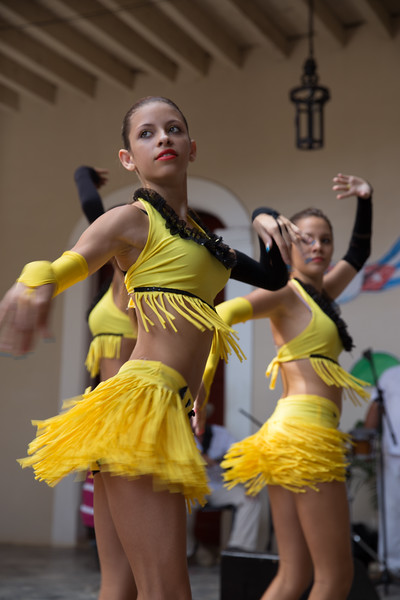
Though rich, the experience was not without its challenges. “The politics are so tense between the U.S. and Cuba that when you say you are a group of artists interested in building solidarity with Cuba and put on a performance or two, travel throughout the country, these are all things that are kind of a touchy spot,” said Adiza Ameh who served as a translator for the Seattle cohort. “And ... there just needs to be an understanding of exactly what you mean by solidarity.”
While the trip to Viñales provided the space for both U.S. and Cuban artists to perform for and with one another in front of an audience 400 to 500 people, Havana proved to be more of a logistical challenge. Ameh says that one of the primary point people responsible for coordinating rehearsal and performance venues in Havana "totally thought we were just some more U.S. based artists here to show and tell and do a whole little performance and then leave Cuba."
“But that’s not at all what we were planning to do and she [Shontina Vernon] had made it specifically very clear what our intentions were,'' Ameh says. "But because of this tense political situation and the history the U.S. has with Cuba … for good reason I think, they are very skeptical of us.”
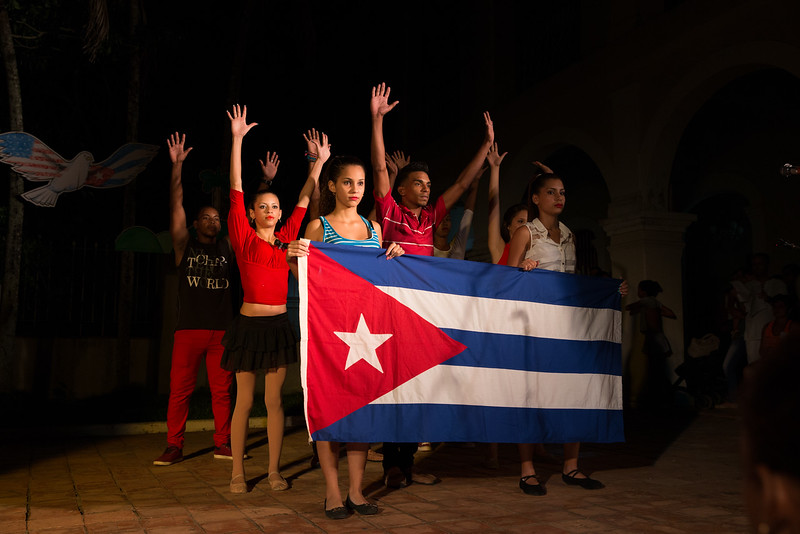
Skepticism gave way to understanding, though not in time for there to be a show in Havana. Having studied abroad in Cuba in 2014, Ameh anticipated that this might be a challenge, but she took the long view of things.
“I don’t think this is a one-time thing,” she says. “I think this should be a two-year project where we have multiple trips to Cuba back and forth and Cubans, hopefully if there is a way to make it happen, can come back and forth, so it's not just us going there.”
Vernon agrees that this trip was just the beginning. “I looked over and everybody was on stage together at the end," she says, "and it was a real moment of solidarity between North American artists and Cuban artists in a culminating events.”
The Seattle group plans on doing a report on the trip and performance sponsored by STG Presents Night at the Neptune. The schedule will be announced on their website.
This article was made possible by the generous support of the Lucky Seven Foundation.

